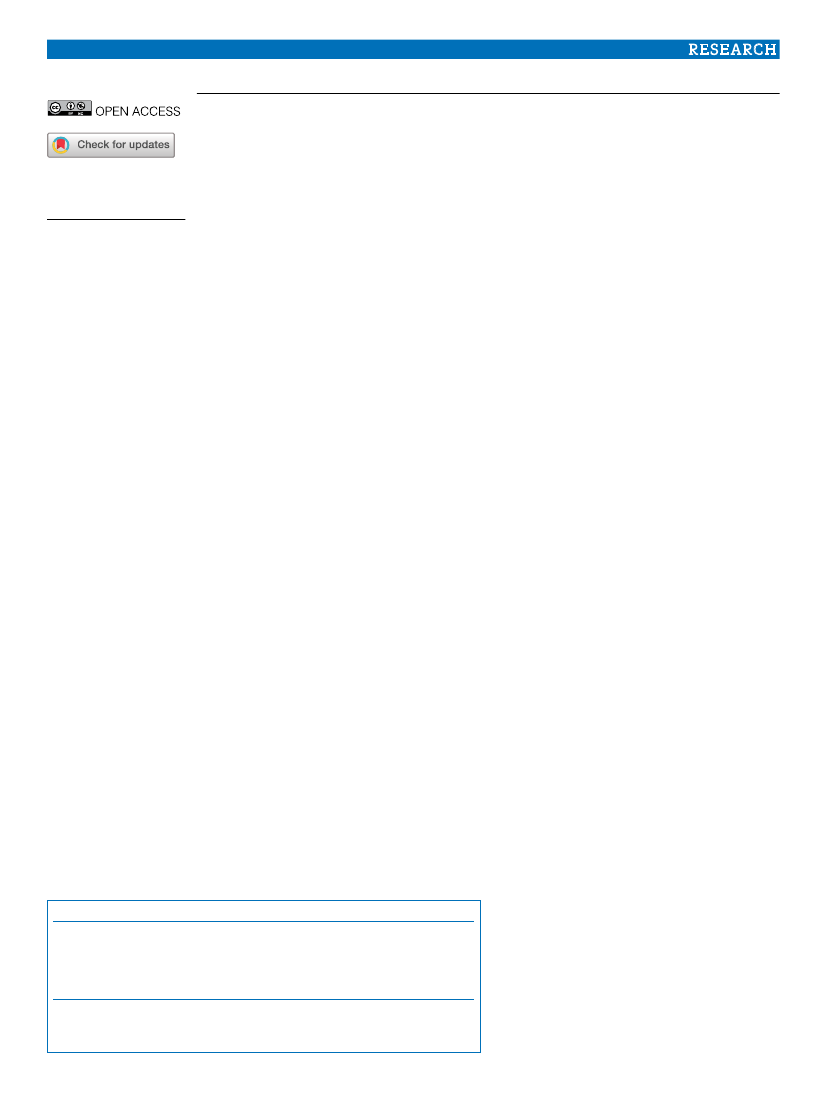
RESEARCH
BMJ: first published as 10.1136/bmj.m2984 on 2 September 2020. Downloaded from
http://www.bmj.com/
on 3 September 2020 at National Institute of Occupational Health - DNLA.
Protected by copyright.
Work related sexual harassment and risk of suicide and suicide
attempts: prospective cohort study
Linda L Magnusson Hanson,
1
Anna Nyberg,
1
Ellenor Mittendorfer-Rutz,
2
Fredrik Bondestam,
3
Ida E H Madsen
4
Stress Research Institute,
Department of Psychology,
Stockholm University, 106 91
Stockholm, Sweden
2
Division of Insurance Medicine,
Department of Clinical
Neuroscience, Karolinska
Institutet, 171 77 Stockholm,
Sweden
3
Swedish Secretariat for Gender
Research, Gothenburg University,
405 30 Gothenburg, Sweden
4
National Research Centre for
the Working Environment, 2100
Copenhagen, Denmark
Correspondence to:
L Magnusson Hanson
(ORCID 0000-0002-2908-1903)
Additional material is published
online only. To view please visit
the journal online.
cite this as:
BMJ2020;370:m2984
http://dx.doi.org/10.1136/bmj.m2984
1
ABSTRACT
Objective
To analyse the relation between exposure to
workplace sexual harassment and suicide, as well as
suicide attempts.
Design
Prospective cohort study.
setting
Sweden.
ParticiPants
86 451 men and women of working age in paid work
across different occupations responded to a self-report
questionnaire including exposure to work related
sexual harassment between 1995 and 2013. The
analytical sample included 85 205 people with valid
data on sexual harassment, follow-up time, and age.
Main OutcOMe Measures
Suicide and suicide attempts ascertained from
administrative registers (mean follow-up time 13 years).
results
Among the people included in the respective analyses
of suicide and suicide attempts, 125 (0.1%) died
from suicide and 816 (1%) had a suicide attempt
during follow-up (rate 0.1 and 0.8 cases per 1000
person years). Overall, 11 of 4095 participants
exposed to workplace sexual harassment and 114 of
81 110 unexposed participants committed suicide,
and 61/4043 exposed and 755/80 513 unexposed
participants had a record of suicide attempt. In
Cox regression analyses adjusted for a range of
sociodemographic characteristics, workplace sexual
harassment was associated with an excess risk of both
suicide (hazard ratio 2.82, 95% confidence interval
1.49 to 5.34) and suicide attempts (1.59, 1.21 to
2.08), and risk estimates remained significantly
increased after adjustment for baseline health and
certain work characteristics. No obvious differences
between men and women were found.
cOnclusiOns
The results support the hypothesis that workplace
sexual harassment is prospectively associated
with suicidal behaviour. This suggests that suicide
prevention considering the social work environment
may be useful. More research is, however, needed to
determine causality, risk factors for workplace sexual
harassment, and explanations for an association
between work related sexual harassment and suicidal
behaviour.
Accepted:
13 July 2020
WHAT IS ALREADY KNOWN ON THIS TOPIC
Sexual victimisation may lead to suicidal behaviour
However, no population based prospective studies on work related sexual
harassment and suicide or suicide attempts have been conducted
WHAT THIS STUDY ADDS
This large population based cohort study of Swedish men and women indicates
that workplace sexual harassment may be a risk factor for both suicide and
suicide attempts
the
bmj
|
BMJ
2020;370:m2984 | doi: 10.1136/bmj.m2984
Introduction
Work related sexual harassment (referring to any
unwanted and unwelcome acts or conduct of sexual
nature, whether verbal or non-verbal, experienced
as intimidating, hostile, degrading, humiliating, or
offensive in circumstances related to work)
1 2
has
recently received a lot of attention thanks to the “Me
Too” movement. This movement has put an emphasis
on the widespread occurrence of sexual harassment,
especially work related sexual harassment. Exact
prevalences of work related sexual harassment in the
working population are, however, difficult to estimate,
and previous studies show large discrepancies.
Whereas some reports have found that no less
than 80% of all women and 30% of all men have
experienced work related sexual harassment, other
studies show much lower figures ranging from about
1% to 20%, depending on representativeness, how
sexual harassment was measured, and the time frame,
as well as on cultural context.
3 4
For organisations and the society, sexual harassment
may involve substantial costs associated with turnover
of personnel and absenteeism.
5 6
For individuals,
sexual harassment may take a toll on self-esteem, life
satisfaction, and employment opportunities.
7 8
Work
related sexual harassment may also be associated with
a range of negative health outcomes. Previous literature
has associated workplace sexual harassment with,
for example, physical health symptoms, stress, post-
traumatic stress, sickness absence, and particularly
poorer mental health such as psychological distress,
depression, and anxiety.
2 5 7 9 10
Sexual victimisation
may also lead to suicidal behaviour, through an
increased risk of psychiatric disease and psychosocial
factors such as life events, problematic substance
use/misuse, and risky lifestyle and behaviours,
11
or
through behavioural disinhibition, dysregulated mood,
hopelessness, and entrapment.
12
However, studies,
especially prospective studies, on workplace sexual
harassment and suicidal behaviours are lacking. Many
studies have also been based on convenience samples
or specific occupational groups. To our knowledge, no
population based prospective studies on work related
sexual harassment and suicidal behaviours have been
reported. To rectify this, we did a prospective study
1